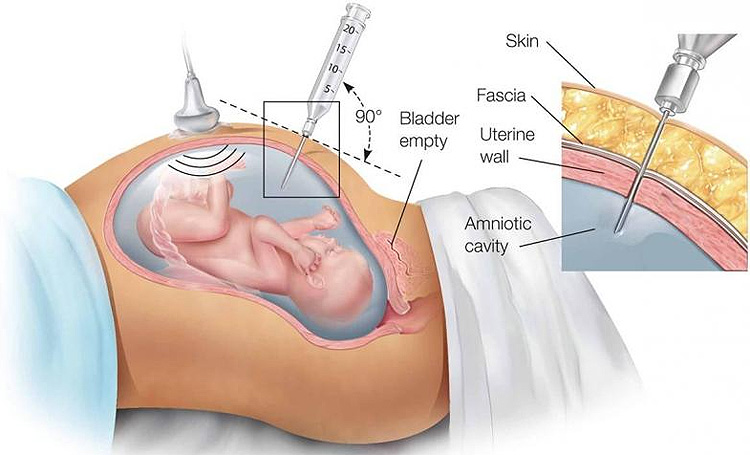It is a procedure, by which the amniotic fluid is removed from the uterus which is then used for the treatment or testing. This fluid surrounds the baby and it serves as protection during the pregnancy. It contains various proteins and fetal cells. This fluid can provide valuable information about the health of the baby. For getting better results, it is necessary to understand the risk factors associated with it.

Amniocentesis can be done for many reasons and some of them are following.
Genetic Testing: For genetic testing, the amniotic is taken and is tested for some conditions such as Down’s syndrome.
Fetal Lung Testing: For this purpose, the sample of amniotic fluid is taken and is tested for the determination of the conditions of the lungs of the baby that either they are mature enough for birth or not.
Diagnosis of Fetal Infection:Occasionally, this process is used for the evaluation of the baby’s illness or other infections. It can also be used to measure the severity of anemia in babies who suffer from Rh sensitization. This is an uncommon condition, where the immune system of the mother produces the antibodies, against the specific proteins found in the baby blood cells.
Treatment: This process may also be used as a treatment if too much amniotic fluid is accumulated during the pregnancy. Here the amniocentesis aims to drain the excess of amniotic fluid from the uterus.
Paternity Testing: By the amniocentesis, the DNA can be collected from the fetus, and later it can be compared to the DNA of the potential father.
How to Prepare the Female for Amniocentesis
Before the appointment, one should drink plenty of fluids or drinks. If this process is to be taken after the 20th week of the pregnancy bladder should be empty during the amniocentesis for minimizing the chances of a puncture. The health care provider will ask to sign a contest form before starting the procedure. For emotional support, consider having the company of someone. Health care providers use the ultrasound for the determination of the exact location of the baby in the uterus. They will ask to lie on the exam table and to expose the abdomen. A gel will be applied to the abdomen followed by the cleaning with antiseptic. A thin and hollow needle will be inserted through the abdominal wall to the uterus. A small amount of the amniotic fluid will be taken by the syringe and will be tested for the evaluation of the baby’s health. One may feel the discomfort or cramping after this procedure.